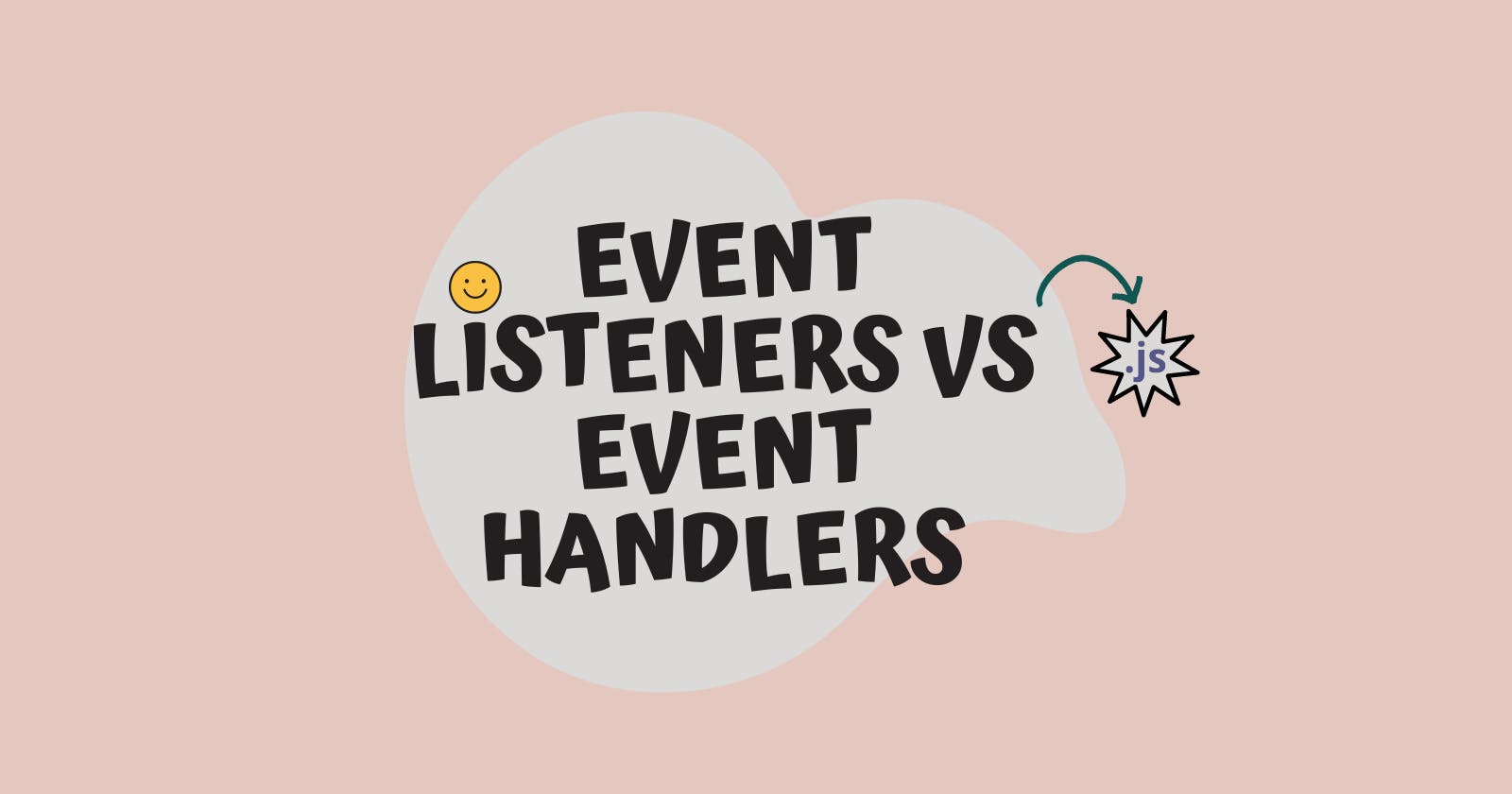JavaScript event handlers & event listeners 101

While taking my Web Design course this semester, I finally learned the slight difference between JavaScript event handlers and listeners... so, I'm here to share my newfound wisdom!!
But, wtf is an event??
An event is usually triggered by user actions, like clicking a button or entering text into a form field! Or they can be triggered by other actions, like the page finishing loading or an error occurring.
It's KEY for frontend developers to show a response to events, for example, a pop-up dialog box confirming a button has been clicked aka, confirmation of submission alert.
There are two ways to handle JavaScript events:
Event handlers
Event listeners
Both are methods of executing some code when an event happens...but which is better?
Let's dive in!!!
Event Handlers
An event handler is a function that's directly assigned to an event property of an HTML element. When the corresponding event occurs, the function (the event handler) is executed!
To use an event handler, use one of the event handler properties of an object, onclick, onload, or onsubmit. (See a list of all the event properties here).
Note: an object can only have one event handler for each event type.
Here's an example using the event property onclick:
const button = document.querySelector(".btn")
button.onclick = () => {
console.log("Button clicked.");
};
The onclick event handler is triggered when the user clicks on the button. And as a response to the event, "Button clicked." is output to the console!
Event Listeners
The second option to handle JavaScript events is: event listeners. An event listener is a function that's attached to an HTML element using the addEventListener() method. This option works by the event listener listening for events and getting triggered when an event happens!
Event listeners allow multiple functions to be registered to the same event, and also provide the ability to easily remove the listener when it's no longer needed.
Let’s rewrite the previous code snippet by adding an event listener to a button to listen for clicks:
const button = document.querySelector(".btn");
// Define named function buttonClick()
function buttonClick() {
console.log("Button clicked.");
}
// Add event listener using buttonClick()
button.addEventListener("click", buttonClick);
I defined a named function called buttonClick that logs "Button clicked." to the console when executed. Then, an event listener is added to the button element using addEventListener, passing in the event type ("click") and the buttonClick function!
You can also remove event listeners by using the removeEventListener() method!
Here's an example using the same named function buttonClick:
// Remove event listener
button.removeEventListener("click", buttonClick);
In the code snippet above, I used the removeEventListener method on the button element, passing in the same event type ("click") and the buttonClick function. That removes the event listener from the button element, so that the buttonClick function no longer executes when the button is clicked! 😄
Event Listeners vs Event Handlers
Soooo, what's the difference between the two?
An object can only have one 'event handler' for a specific event, but it can have multiple 'event listeners' for the event.
Let's break it down:
If you add two event handlers for the same button click, the second event handler will overwrite the first, and only that second event will output. For example:
// Adding two event handlers using anonymous functions
document.querySelector(".btn").onclick = function() {
console.log("Hello ");
};
document.querySelector(".btn").onclick = function() {
console.log("World!");
};
// This outputs "World!" out to the console.
It's acceptable to have multiple event listeners of the same event per object. So, let's rewrite the previous code snippet, but using addEventListener instead, so both of the triggers will output:
// Define two named functions
function sayHello() {
console.log('Hello ');
}
function sayWorld() {
console.log('World!');
}
// Get button element and add event listeners
const button = document.querySelector('.btn');
button.addEventListener('click', sayHello);
button.addEventListener('click', sayWorld);
// This outputs "Hello" and "World!" out to the console.
Note: using named functions vs. anonymous functions makes your code more readable and easier to understand, especially if you're creating intricate event listeners!
Which one should I use?
It's usually better to use event listeners over event handlers!
Why?
Event listeners offer more flexibility & control in handling events, especially when you're dealing with more complex applications. Event listeners can be attached to multiple functions of the same event, which helps keep code organized 🙂
So, in conclusion:
Event listeners > event handlers
I hope this helped clear up any confusion you had about event handlers & listeners!! If it did, give me a follow on Twitter or here on Hashnode 😄
🧡 My website: https://laylacodes.github.io/
